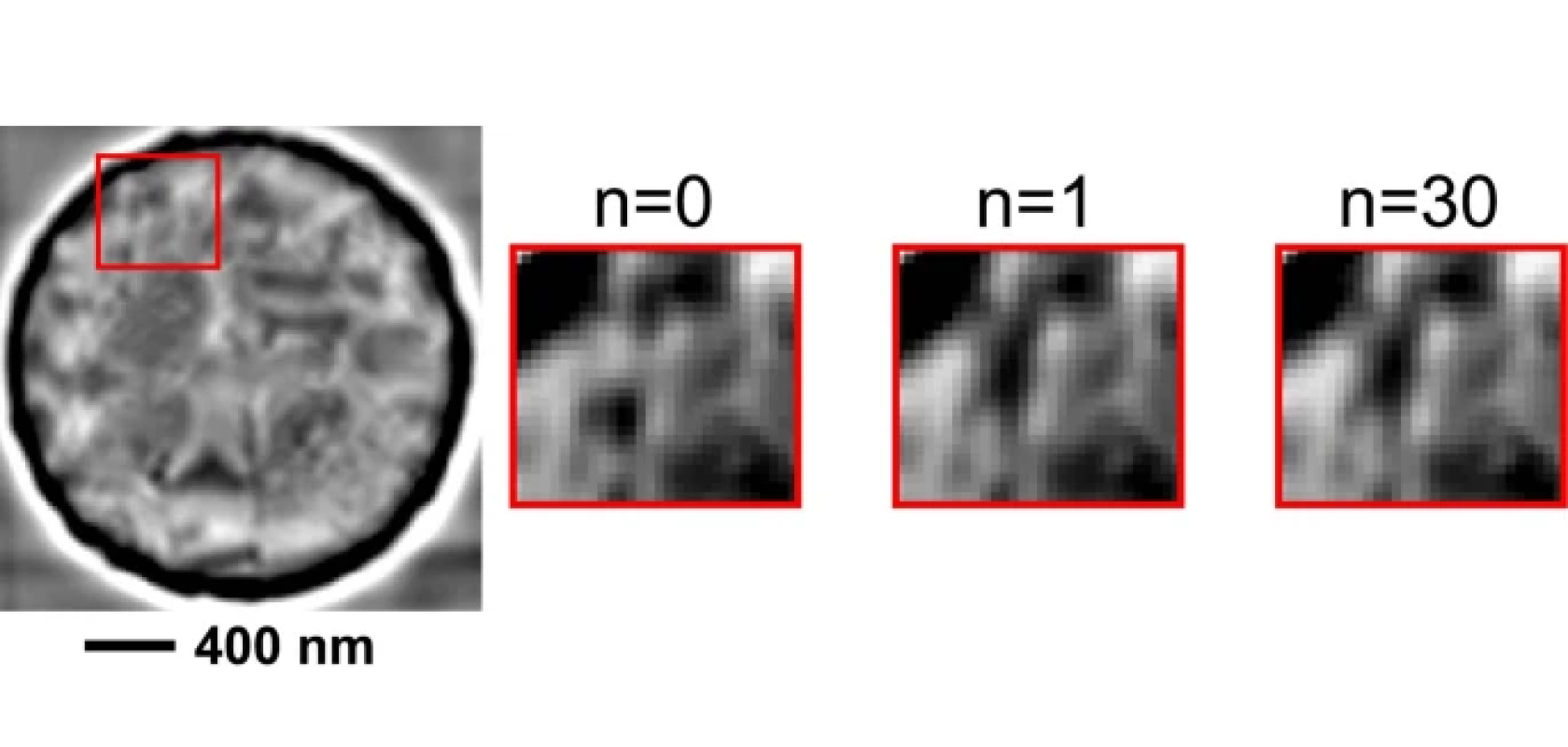Researchers have pioneered a new lensless ultrafast X-ray imaging method that enables the direct observation of the dynamics of quantum materials at the nanoscale.
The method could be used to better understand novel nanotechnologies by imaging inside nanoscale devices.
The use of light to produce transient phases in quantum materials is fast becoming a novel way to engineer new properties in them, such as the generation of superconductivity or nanoscale topological defects.
However, visualising the growth of a new phase in a solid is not easy, due in-part to the wide range of spatial and time scales involved in the process.
Although in the last two decades scientists have explained light-induced phase transitions by invoking nanoscale dynamics, real space images have not yet been produced and, thus, no one has seen them.
Now however, in a Nature Physics study, scientists have pioneered a new imaging method that allows the capture of the light-induced phase transition in vanadium oxide (VO2) with high spatial and temporal resolution.
The research was conducted by scientists from: The Institute of Photonic Sciences (ICFO), Aarhus University, Sogang University, Vanderbilt University, the Max Born Institute, the Diamond Light Source, ALBA Synchrotron, Utrecht University, and the Pohang Accelerator Laboratory.
Their new technique is based on coherent X-ray hyperspectral imaging at a free electron laser, which has allowed the researchers to visualise and better understand, at the nanoscale, the insulator-to-metal phase transition in this very well-known quantum material.
The crystal VO2 has been widely used to study light-induced phase transitions. It was the first material to have its solid-solid transition tracked by time-resolved X-ray diffraction and its electronic nature was studied by using for the first time ultrafast X-ray absorption techniques. At room temperature, VO2 is in the insulating phase. However, if light is applied to the material, it is possible to break the dimers of the vanadium ion pairs and drive the transition from an insulating to a metallic phase.
In their experiment, the authors of the study prepared thin samples of VO2 with a gold mask to define the field of view. Then, the samples were taken to the X-ray Free Electron Laser facility at the Pohang Accelerator Laboratory, where an optical laser pulse induced the transient phase, before being probed by an ultrafast X-ray laser pulse. A camera captured the scattered X-rays, and the coherent scattering patterns were converted into images by using two different approaches: Fourier Transform Holography (FTH) and Coherent Diffractive Imaging (CDI). Images were taken at a range of time delays and X-ray wavelengths to build up a movie of the process with 150 femtosecond time resolution and 50nm spatial resolution, but also with full hyperspectral information.
The new methodology allowed the researchers to better understand the dynamics of the phase transition in VO2. They found that pressure plays a much larger role in light-induced phase transitions than previously expected or assumed.
"We saw that the transient phases aren't nearly as exotic as people had believed!” said Allan Johnson, postdoctoral researcher at ICFO. “Instead of a truly non-equilibrium phase, what we saw was that we had been misled by the fact that the ultrafast transition intrinsically leads to giant internal pressures in the sample millions of times higher than atmospheric. This pressure changes the material properties and takes time to relax, making it seem like there was a transient phase. Using our imaging method, we saw that, at least in this case, there was no link between the picosecond dynamics that we did see and any nanoscale changes or exotics phases. So, it looks like some of those conclusions will have to be revisited."
To identify the role played by the pressure in the process, it was crucial to use the hyperspectral image. "By combining imaging and spectroscopy into one great image, we are able to retrieve much more information that permits us to actually see detailed features and decipher exactly where they come from," continued Johnson. "This was essential to look at each part of our crystal and determine whether it was a normal or an exotic out-of-equilibrium phase-and with this information we were able to determine that during the phase transitions all the regions of our crystal were the same, except for the pressure."
Although the researchers describe the present work as fundamental research, the potential applications of this technique could be diverse, since they could "look at polarons moving inside catalytic materials, try imaging superconductivity itself, or even help us understand novel nanotechnologies by viewing and imaging inside nanoscale devices" Johnson concluded.


